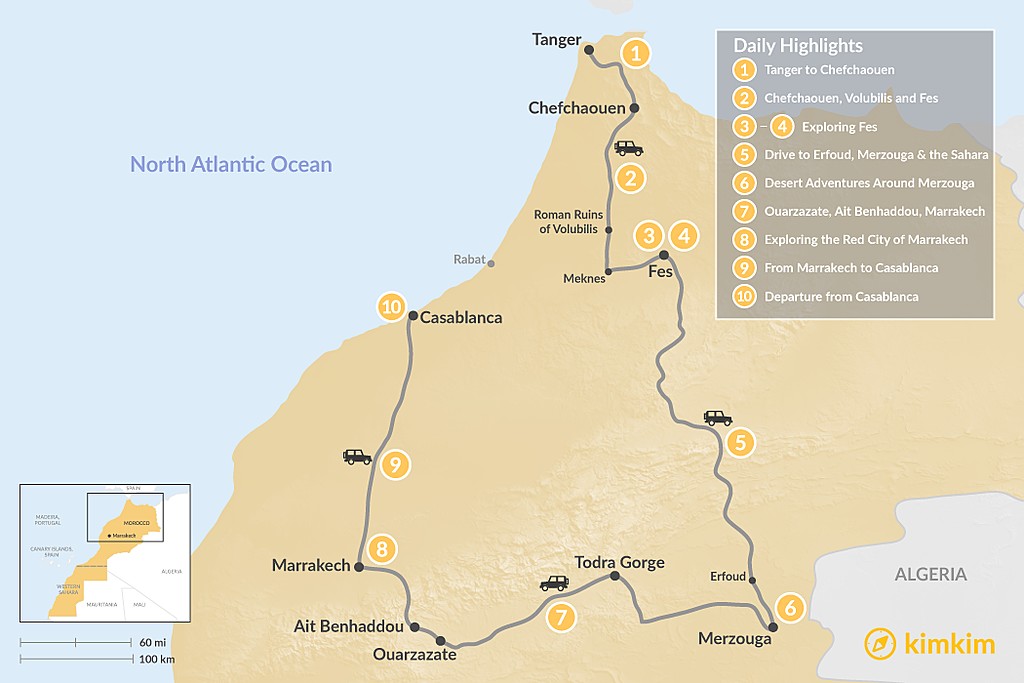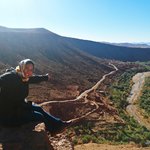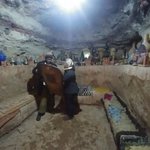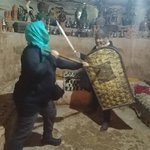Highlights
- Wander the quiet, blue-painted streets of Chefchaouen
- Discover souks, tanneries, and artisan workshops in medieval Fes
- Enjoy traditional Berber music beside a desert campfire
- Explore markets and souks around Jemaa el-Fna Square in Marrakesh
- Visit the Hassan II Mosque and the world's tallest minaret in Casablanca
Brief Itinerary
| Day | Highlights | Overnight |
|---|---|---|
| Day 1 | Arrive in Tangier, Drive to Chefchaouen, Explore | Chefchaouen |
| Day 2 | Transfer to Fes via Volubilis & Meknes | Fes |
| Days 3-4 | Explore the Medieval Medina of Fes | Fes |
| Day 5 | Transfer to Erg Chebbi: Erfoud, Merzouga & Sahara | Erg Chebbi |
| Day 6 | Transfer to Ouarzazate via Desert Towns & Oases | Ouarzazate |
| Day 7 | Transfer to Marrakesh via Aït Benhaddou & Tizi n'Tichka Pass | Marrakesh |
| Day 8 | Marrakesh: Exploring the Red City | Marrakesh |
| Day 9 | Free Morning in Marrakesh, Drive to Casablanca | Casablanca |
| Day 10 | Depart Casablanca |
Detailed Itinerary
Day 1: Arrive in Tangier, Drive to Chefchaouen, Explore

Welcome to Tangier—the gateway between Europe and Africa. Located close to the south of Spain, visit the medina (old quarter) and take a paseo to enjoy a stroll along the promenade. Or, travel straight on to the blue-hued city of Chefchaouen in the Rif Mountains. Enjoy the scenic route, stopping along the way to hike to the Cascades d'Akchour (Waterfalls of Akchour). Chefchaouen offers endless winding, narrow streets, and picturesque buildings. Find Plaza Uta el-Hammam for a restaurant or café and enjoy a meal as you people-watch.
Though non-Muslims are not permitted to enter, the Grand Mosque is still worth a visit. From there, explore the nearby kasbah (old fortification) and tour the garden, museum, and some of the old prison cells. Follow a path outside of the city walls to Hotel Atlas and climb to the rooftop to enjoy a panoramic view of the Blue City. Or, follow the street east to pass over the Ras el Ma Spring and ascend the path (20-30 minutes) until you reach the abandoned white Spanish Mosque. Enjoy one last view over Chefchaouen as the sun sets behind the mountains.
Hike duration: 2-3 hours
Day 2: Transfer to Fes via Volubilis & Meknes

Rise early to snap photos of the people-less streets before leaving for Fes. Stop along the way at the UNESCO-protected Volubilis ruins—the Roman's farthest reach in Africa. Wander the complex, exploring merchant homes with still-intact heating systems, temples, and many mosaics in situ. Continue on to the smaller, less busy version of Fes, Meknes, for an introduction to your first historic imperial city. The two main points of interest are the Ville Impériale (imperial city) and the medina. Be sure to visit the Bab al-Mansour gate, the Mausoleum of Moulay Ismail, and the Royal Stables.
Carry on eastward to Fes and your second imperial city. Before venturing into the medina on foot (the largest urban car-free zone in the world), drive uphill to the ruins of the Merenid Tombs for an all-encompassing view of the medieval city. The best time to visit the tombs is around dusk. The muezzin's calls to worship can be heard through the valley as the city lights begin to glow, adding to the atmosphere. Return to your traditional riad for a warm meal and settle in for the evening.
Day 3: Explore the Medieval Medina of Fes

The oldest of the imperial cities in Morocco and perhaps the most interesting and exciting to explore, Fes has undergone little colonial development, adding to its medieval appeal. The most complete medina in the Arab world and a UNESCO World Heritage site, Fes is made up of three main points of interest: Fes el Bali (old Fes, the medina, and where you'll spend most of your time), Fes el Jdid ('new' Fes), and the French-influenced Ville Nouvelle. Meet your guide to learn more about the history and culture of Fes and, most importantly, to help you navigate the medina.
Begin your tour in Fes el Bali, starting at the Bab Boujeloud gate, welcoming you onto Talâa Kebira. Discover the wares for sale in the souks (markets) and shops as you pass the Spanish and Tunisian-influenced architecture. One of the most unique sights in the old Medina is the tanneries, and Chouara Tannery is no exception. Next, climb to the rooftop of a nearby leather shop for a better view of the 11th-century stone pots filled with dye and men working. Follow your guide to Al-Qarawiyyin Library and Mosque (859 CE). If you're lucky, you may be able to sneak a peek inside.
Chat with a local specialist who can help organize your trip.
Day 4: Free Day in Fes

Today, visit the Batha Museum. Housed in a 19th-century palace, the museum is home to a collection of traditional Moroccan arts and crafts, including carved wood, zellij (mosaic tilework), and local pottery (a highlight). Spend time in the Andalusian-style gardens before walking to the Mellah (old Jewish quarter and cemetery). Take advantage of its location for a panoramic photo of the city. Continue south to Ville Nouvelle and discover the dramatic change in architecture.
Tour a ceramics and tile collective to learn how local artisans make wares, from shaping the clay to painting the designs. As well as watch the tile masters at work, fitting together small pieces of tile to form intricate mosaics. Return toward Fes el Bali, stopping along the way in Jnan Sbil (Bou Jeloud Gardens)—the halfway point between the Mellah and Bab Boujeloud. Spend some time relaxing in the gardens' grandeur and cool off in the central fountains or beside the lake.
Day 5: Transfer to Erg Chebbi: Erfoud, Merzouga & Sahara

Start your day bright and early and travel south toward Merzouga. Along the way, you'll climb up and over the Col du Zad pass (7,146 feet or 2,178 m) through the cedar forests of the Middle Atlas mountains. Enjoy sightings of the local Barbary Macaque monkeys before stopping for lunch in Midelt (the 'apple city') relishing the nearby Moulouya River. Continue over the Tizi n'Talremt Pass into the Ziz Valley, known for its hidden oases and palm tree clusters. Along the road, you'll see many fortified houses known as ksars—built to protect precious wares, including gold, salt, and spices.
Continue on to Erfoud, known for its date festival and fossil mining. Here, you can visit a local collective to learn more about the process and meet some local artisans. Continue to Erg Chebbi, an extensive sea of sand dunes covering an area of 13.5 square miles (35 square km). Never stationary, the massive dunes shift and travel depending on the changing wind. Upon reaching Merzouga, climb atop your camel to ride through the dunes to your already-prepared-for-you camp. Trek up a nearby sand dune to watch the sunset before returning to camp for a delicious dinner, relaxing by the campfire.
Day 6: Transfer to Ouarzazate via Desert Towns & Oases

Catch the sunrise before renting a sandboard to test your skills. Leave the dunes and head to Khemliya to experience a traditional Saharan village—its people originally from Mali. Continue west to pass through a dramatic gate into Rissani. A market town, Rissani holds a livestock auction and is home to a "donkey parking lot," a site worth a visit! Make your way to the desert town of Tinghir before reaching the 984-foot (300 m) deep Todra Gorge. You'll have time to explore the gorge and relax in the cool water of the shallow Todra River.
Travel west through Boumalne Dades and the Valley of a Thousand Kasbahs. Though many are now in disrepair, local families still live in some of them. You may even come across nomads herding their animals. Head west to Kelâat M'Gouna. Known for its Festival des Roses, here you can see extensively cultivated farmland bordered with fragrant rose bushes. Continue west to Ouarzazate, a gateway to the Sahara Desert made popular by the film industry, and join a studio tour to see the highlights.
Day 7: Transfer to Marrakesh via Aït Benhaddou & Tizi n'Tichka Pass

Rise early and continue on to Morocco's most famous kasbah and a UNESCO World Heritage site, Aït Benhaddou. It's estimated the old ksar (a walled town) dates from the 11th century when it held an important position along the trans-Saharan trade route. Stop and explore the narrow streets and passageways of this traditional mud-brick city. From there, travel the winding road over the High Atlas mountains, noting the highest peak, Mount Toubkal (13,671 feet or 4,167 m). Stop near the top of the Tizi n'Tichka Pass (7,415 feet or 2,260 m) to admire the view over the mountain range.
Stop at an argan oil cooperative in Taddert to learn how olives are processed before making your descent down the High Atlas and into the changing scenery. Upon arriving in the Red City of Marrakesh, settle into your hotel and spend the rest of the afternoon as you like. Orient yourself around Marrakesh's main square, Jemaa el-Fna, and visit the 12th-century Koutoubia Mosque to its west. At 253 feet (77 m), the minaret is hard to miss. Wander the attached gardens, dotted with fountains, pools, flowers, and palm trees, perfect for a late afternoon stroll when the late-day sun glows on the minaret.
Return to Jemaa el-Fna—Africa's busiest square—and discover the lively activity: musicians, performers, snake charmers, and bustling stalls. Grab something to eat, or choose a nearby café and enjoy the show!
Day 8: Marrakesh: Exploring the Red City

Nicknamed the "Red City" for its 1000-year-old red sandstone city walls and buildings, Marrakesh is a major economic center. Marrakesh has Berber rather than Arab roots and was once an important trading capital for tribes of the Atlas mountains. For a great way to tour the medina, board a calèche (French for horse-drawn carriage) and begin to adjust to your surroundings. Notice the fondouks—medieval inns that provided merchants and travelers with shelter and supplies. Today, some have been converted into residences or large shopping areas and workshops that you can explore.
Indulge your senses as you explore the complicated labyrinth of souks tucked behind ordinary restaurants and shops. Check out Souk el Attarin, Souk Chouari, and Souk Smata for a selection of spices, woodwork, and babouche (traditional Moroccan slippers). Visit Souk des Tenturier or the dyers' souk to see how cloth and yarn are dyed using traditional methods. Next, admire the fine example of Moroccan Islamic architecture of the Ben Youssef Madrasa, a 16th-century Quranic school, and note the ornate detail of its interior: carved cedar ceilings, sculpted plaster, and zellij tiling.
Day 9: Free Morning in Marrakesh, Drive to Casablanca

Take the morning to explore the Kasbah area south of Jemaa el-Fna. Once there, check out the Saadian Tombs and discover the 500-year-old craftsmanship that went into its construction. Visit the sunken gardens of the 17th-century El Badi Palace as you work your way through the mellah and to the 19th-century Bahia Palace. If there's time, you may wish to check out the Dar Di Said Museum (also known as the Museum of Moroccan Arts) to see exhibits of clothing, antiques, jewelry, and beautifully carved Hispano-Moorish decorations of carved cedar wood.
Continue north along the Atlantic coast until you reach the modern commercial hub of Casablanca. Take a stroll along the Boulevard de la Corniche, the beach promenade that follows the Atlantic (often referred to as Morocco's 'Miami') to the Hassan II Mosque. Though tours of the interior are only offered in the morning, take advantage of the timing and watch the sunset behind the architectural marvel. Grab a bite in Rick's Café, a restaurant, bar, and café recreated to reflect the bar in the movie classic Casablanca.
Day 10: Depart Casablanca

Before you catch your return flight home, spend the morning exploring the Hassan II Mosque. Sitting in a picturesque location on the ocean, its 690-foot (210 m) minaret is the tallest in the world. While the exterior and surrounding area are impressive, what makes this mosque even more distinctive is it's one of the few mosques in the country where non-Muslims are permitted to enter. Join a morning tour and marvel at the fine artisanship: hand-carved stone and wood, intricate marble floor detailing, and gilded ceilings.
More Great Morocco Itineraries
Looking for more inspiration for your trip to Morocco? Check out these other Morocco itineraries, explore different ways to spend 10 days in Morocco, or discover the best time to visit Morocco.








